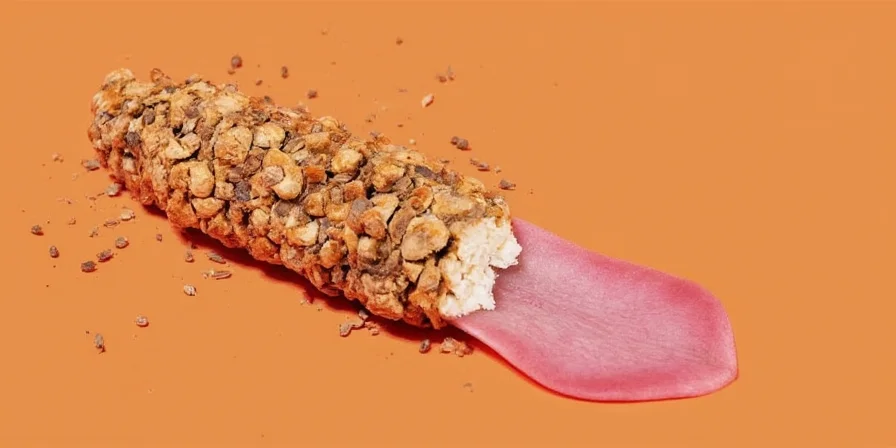The Tingling Truth: 7 Numbing Peppercorn Secrets That Will Blow Your Mind (And Tingle Your Tongue)
If you've ever bitten into a dish that made your tongue feel like it was being tickled by tiny electric fairies, chances are you've encountered the mighty numbing peppercorn. It’s not just a spice — it’s an experience. Whether you're a seasoned spice pro or a curious kitchen newbie, this guide will take you on a flavor rollercoaster that tingles, thrills, and maybe even terrifies a little.
Table of Contents
- What Exactly Is Numbing Peppercorn?
- The Science Behind the Tingling Sensation
- Types of Numbing Peppercorns You Should Know
- How to Use Them Like a Pro
- Common Myths & Mistakes
- Pairing Numbing Peppercorns with Other Flavors
- Storage Tips for Maximum Tingliness
- Safety First: Handling the Heat and Tingling
What Exactly Is Numbing Peppercorn?
Numbing peppercorn is the spicy world's version of a prankster — it doesn’t burn like chili peppers do. Instead, it gives your mouth a buzzy, tingly sensation that can border on the surreal. While many people associate this unique flavor profile with Sichuan cuisine, its roots go deeper than most realize.

Unlike black pepper, which gets its kick from piperine, numbing peppercorn owes its magic to a compound called hydroxy-alpha-sanshool. And no, that’s not a spell from Hogwarts — it’s real science!
The Science Behind the Tingling Sensation
Ever wonder why your lips start buzzing after eating mapo tofu? It’s all in the chemistry.
| Compound | Effect |
|---|---|
| Piperine | Burns like a spicy campfire |
| Hydroxy-alpha-sanshool | Tingles like a mini electrical shock |
This sneaky molecule actually activates the touch-sensitive nerve endings in your mouth. So instead of tasting spiciness, you’re literally feeling vibrations — kind of like if your taste buds started listening to dubstep.

Types of Numbing Peppercorns You Should Know
Not all numbing peppercorns are created equal. Here’s your cheat sheet:
- Sichuan Peppercorn (Zanthoxylum simulans): The rockstar of Chinese cuisine. High buzz factor, citrusy finish.
- Timut Pepper (Nepal): Fruity aroma with a milder tingle. Perfect for adventurous home cooks.
- Japanese Sansho (Zanthoxylum piperitum): Subtle numbness, often paired with grilled fish or yuzu.
- Tasmanian Pepper: Australian native spice with earthy, slightly sweet undertones.

How to Use Them Like a Pro
Using numbing peppercorns is both art and science. Here are some pro tips:
- Toast before grinding: Enhances flavor without increasing numbness. Just be careful — open windows help!
- Dry-fry for oils: Adds depth when used as a base in stir-fries or braises.
- Infuse in alcohol: Make peppercorn-infused spirits for cocktails that surprise and delight.
- Use sparingly: A little goes a long way. Start with a pinch, then adjust.
- Pair with cooling ingredients: Think sesame paste, yogurt, or coconut milk to balance the tingling.

Common Myths & Mistakes
Let’s bust some myths and save you from embarrassment (and numb tongue syndrome):
- Myth: More = more buzz. Reality: Overloading your dish just makes it bitter.
- Myth: Store them in clear jars on the counter. Reality: Keep them sealed, cool, and dark!
- Myth: Boiling them makes them safer. Reality: They still pack a punch, but might lose flavor.
- Mistake: Using them like regular pepper. Tip: Always toast first!

Pairing Numbing Peppercorns with Other Flavors
The right pairing can elevate your dish from “meh” to “mind-blown.” Try these combos:
- Citrus: Lemon zest or orange peel enhance the natural floral notes.
- Fermented: Soy sauce, doubanjiang, or kimchi work beautifully with the tingle.
- Umami-rich: Mushrooms, aged cheeses, miso — your taste buds will thank you.
- Crisp vegetables: Think cucumber, radish, or slaw to balance the heat.

Storage Tips for Maximum Tingliness
Want your peppercorns to keep their pop? Follow these storage rules:
- Store whole peppercorns — they last longer than ground versions.
- Use airtight containers to block moisture and air.
- Keep away from direct sunlight and heat sources.
- Label and date your spices — freshness matters!
- Freeze them for long-term storage to lock in potency.

Safety First: Handling the Heat and Tingling
Even seasoned chefs sometimes forget how powerful these little guys can be. Stay safe with these tips:
- Wear gloves when handling crushed or ground peppercorns — seriously, don’t skip this!
- Avoid touching eyes or face during prep.
- Rinse your hands in vinegar if they feel tingly or irritated.
- If someone has an allergic reaction, seek medical attention immediately.
- Test the potency before serving to guests — not everyone loves a tingling tongue.

Conclusion
Numbing peppercorns aren't just another spice — they're a culinary adventure waiting to happen. From the scientific marvel behind their tingling magic to the subtle differences between regional varieties, there's always something new to explore. Whether you're simmering a bold Sichuan stew or experimenting with fusion flavors, understanding how to use and handle these powerful pods can transform your cooking game.
So next time you reach for that jar of numbing peppercorns, remember: you're not just seasoning food — you're creating an experience. Now go out there, experiment boldly, and let your taste buds dance the tingling tango!











 浙公网安备
33010002000092号
浙公网安备
33010002000092号 浙B2-20120091-4
浙B2-20120091-4